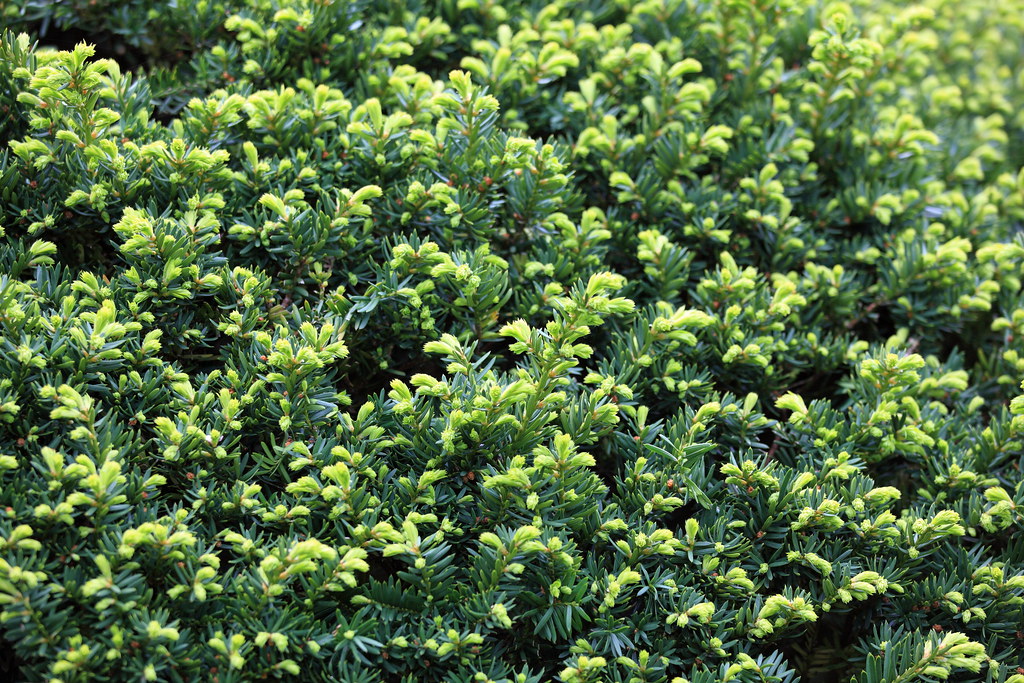
-
Identify plants that offer privacy and enhance the tranquil atmosphere of a Zen garden.
-
Discover how to strategically place plants for optimal privacy and aesthetic appeal.
-
Learn about evergreen and fast-growing plant options for year-round coverage.
Before you start planting, it’s essential to understand the layout of your garden and where privacy plants will be most effective. Consider the following:
Selecting the Right Privacy Plants
Evergreen Options for Year-Round Privacy
Evergreens are the backbone of any privacy planting. They provide lush greenery throughout the year and are essential for maintaining a consistent look in your garden. Some of the best evergreen options include:
Japanese Yew (Taxus cuspidata): Hardy and versatile, this evergreen can be pruned into various shapes.

-
Holly (Ilex): With its glossy leaves and red berries, hollies offer a traditional look and can be quite dense.

Bamboo (Phyllostachys): For a fast-growing screen, bamboo is a popular choice, but be sure to choose a non-invasive species.

Remember, the key to a harmonious Japanese garden is balance, so mix and match these evergreens with flowering plants and deciduous shrubs for a dynamic and engaging landscape. For more information on ‘Traditional Japanese & Zen Garden Plants‘, check out our Ultimate Guide here.

Fast-Growing Varieties for Quick Coverage
If you’re looking to establish privacy quickly, consider fast-growing plants. These varieties can provide a lush screen in a relatively short amount of time:
-
Willow (Salix): Known for its rapid growth, willow can create a dense barrier but requires regular maintenance.
:max_bytes(150000):strip_icc()/white-willow-salix-alba-guide-5211968-hero-1eb47e88e3a443f68ca43f34797e802b.jpg)
Privet (Ligustrum): Privet hedges are easy to shape and can grow several feet in a single season.

Elephant Grass (Miscanthus sinensis): This tall grass can reach heights of up to 12 feet and adds a soft, feathery texture to your garden.

While fast growth is an advantage, it’s important to consider the long-term maintenance these plants will require. They may need more frequent pruning to keep them in check and to maintain the overall design of your garden.

Benefits of Incorporating Privacy Plants
Privacy plants serve more than one function in your garden. They’re not just barriers; they’re vital components of your garden’s ecosystem. Here are some of the benefits they offer:
Enhanced Privacy: They create secluded areas, allowing you to enjoy your garden without outside disturbances.
-
Wind Protection: These plants can act as windbreaks, protecting more delicate flora and creating a calmer environment.
-
Noise Reduction: A well-placed hedge or screen of plants can dampen the noise from nearby streets, making your garden a quieter place.
-
Improved Air Quality: Plants filter pollutants, providing you with cleaner air to breathe as you relax in your garden.
-
Support for Wildlife: Privacy plants can offer food and shelter for birds and beneficial insects, adding to the natural charm of your garden.

Frequently Asked Questions (FAQ)
What are the best low-maintenance privacy plants for a Japanese garden?
Low-maintenance privacy plants are ideal for gardeners who want to enjoy their sanctuary without too much fuss. Some of the best options include:
-
Bamboo (choose clumping varieties to avoid invasiveness)
-
Japanese Holly (Ilex crenata)
-
Japanese Yew (Taxus cuspidata)
-
Mugo Pine (Pinus mugo)
These plants require minimal pruning and are generally resistant to pests and diseases.
How tall should privacy plants be for an effective screen?
The height of your privacy plants will depend on the level of seclusion you desire and the scale of your garden. A general guideline is to select plants that will reach at least 6 feet in height, which is sufficient to block the view for most situations. However, for areas where you want to create a more enclosed feeling or block a taller structure, consider plants that can grow to 10 feet or more.
Can privacy screens be combined with water features?
Absolutely! Combining privacy screens with water features can enhance the tranquil atmosphere of a Japanese garden. For example, a bamboo screen behind a gently trickling water basin can create a secluded nook that appeals to multiple senses. Just ensure that the plants you choose can tolerate the moisture levels associated with water features.
How often should privacy plants be trimmed or pruned?
Pruning frequency for privacy plants varies depending on the species and the desired look of your garden. Evergreens might only need pruning once or twice a year to maintain their shape, while fast-growing plants like bamboo may require more frequent trims to keep them in check. Always prune with the natural habit of the plant in mind to promote healthy growth and maintain the aesthetic of your Japanese garden.
Are there flowering plants that can provide privacy in a Japanese garden?
Yes, there are flowering plants that can offer privacy and add a splash of color to your garden. Some options include:
-
Azaleas and Rhododendrons, with their lush foliage and spring blooms
-
Camellias, which can provide dense, evergreen growth and beautiful flowers
-
Climbing roses, which can be trained on a trellis to create a fragrant, living wall
These plants not only provide privacy but also bring the changing beauty of the seasons into your garden.
In conclusion, creating privacy in your Japanese garden is about more than just planting a row of tall shrubs. It’s about considering the garden as a whole, understanding the needs of each plant, and harmonizing these with the aesthetic principles of Japanese garden design. With careful selection, strategic placement, and proper care, your privacy plants will flourish, providing you with a secluded and peaceful garden retreat.






